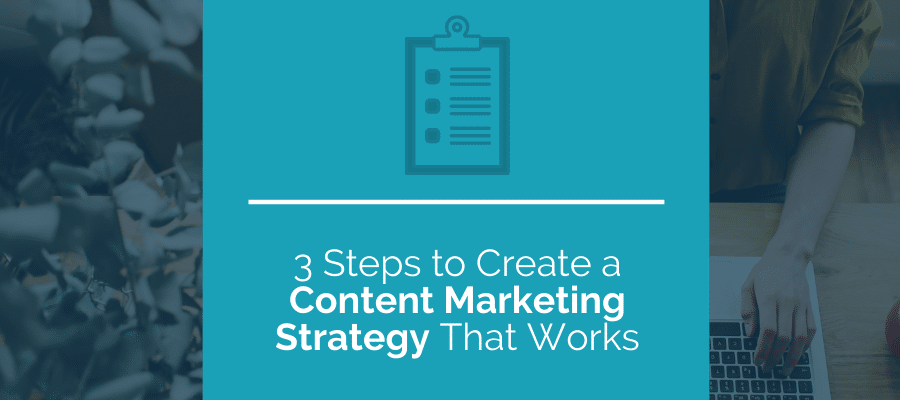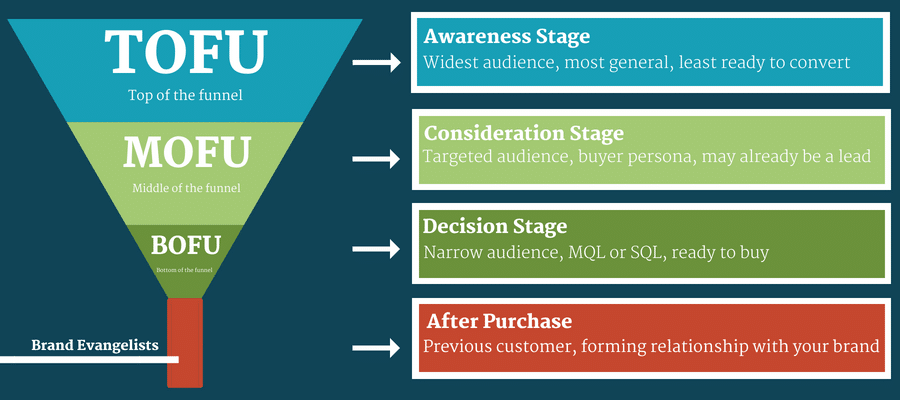
Modern-day marketing allows businesses to put their products or services in front of the most likely customers, instead of wasting advertising dollars on consumers who will never convert. This efficient strategy requires capturing customers’ attention and keeping it through compelling content. But creating a content marketing strategy that works requires slipping into your customers’ shoes. When you know your customers’ interests and needs, you can make and maintain relationships that are valuable to all parties.
What is Content Marketing?
Inbound marketing is the modern-day marketing strategy that attracts customers through targeted, relevant, helpful content. This might include blog posts, guides, videos, pictures, infographics, and much more. Content marketing plays a key role in your overall marketing strategy. The content you deliver works to capture your customers’ interest and persuade them towards a sale. Building a content marketing strategy that works means aligning the right topics, content types, distribution medium, and timing. To do this, you’ll have to think like your customers. Let’s go through this, step-by-step.
3 Steps to Create a Content Marketing Strategy That Works
Stage 1. Brainstorming: What Does Your Audience Need?
To create a content marketing strategy that works, you have to deliver content that your audience cares about. Consider what your audience needs, wants, is looking for, or what they’ll be intrigued by. There are several ways to go about this, and which way works best for you will depend on your industry, product or service, and your target market. Consider these questions to pinpoint some of your target audience’s interests.
- What problem is my product or service solving for my audience?
- What does my audience need or want?
- Within my industry, what problems or obstacles do my customers face?
- What questions could an expert answer for my audience?
- Within my industry, what catches my audience’s attention?
- What is my audience interested in, emotionally invested in, or passionate about?
Think carefully about these questions, and write your answers down. These answers will help you create a content marketing strategy that actually works for your audience.
Stage 2. Planning: How Can Your Content Meet Your Audience’s Needs?
Now that you have a list of interests, concerns, questions and needs that will capture your audience’s interests, the next step is utilizing these in a way that makes sense. As your target market considers your products, services, or business in general, their attention, questions and needs will shift.
The key to creating a content marketing strategy that works is two-fold; creating content that captures your audience’s interests and providing this in an intuitive sequence. For this, you’ll have to work alongside the buyer’s journey. Consider how your customers become aware of your business, familiar with it, and confident in it. Then, consider how your content fits into the following framework:
- Intriguing: This type of content usually appears at the start of the marketing funnel, when you’re trying to get your audience’s attention. This might be a particularly striking image, infographic, story or video. It should inspire some sort of emotion in your audience; curiosity, amazement, or awe.
- Instructional: This type of content shows your audience how to do something or teaches them something new. This should be related to a problem that you’re solving. This might include a written tutorial, an instructional video, a comparative blog post, or an informational podcast.
- Engaging: This type of content provides real value to your audience. It’s useful and solves a problem that is related to your business, service or product. This content might lead a customer to a sale, or keep them engaging with your content, so your business remains at the top of their mind when a product or service is needed.
Stage 3. Execution: Where Can You Place Your Content?
Now that you know what type of content to create and how to present it, the next step in your content marketing strategy is actually placing content. Where you present your information will depend on how you are connecting with your customer.
Once again, the buyer’s journey will be instrumental here. You’ll also need to consider what type of media your audience uses most, and where you can reach them most effectively. Also, consider how your audience uses this media—are they passively browsing, actively searching for a solution, or engaging with a solution?
- Top of the Funnel (TOFU): At this stage, your target audience might be passively browsing or just diving into a problem or need that they have. Your content should intrigue or amaze your audience. Consider social media ads or organic posts, influencer partnerships, display ads, or search-oriented introductory blog posts. Think about the type of media that your audience consumes, so you can place your content where it will be most impactful.
- Middle of the Funnel (MOFU): Here, your content should answer your audience’s questions or start to resolve a need. This might include an in-depth instructional video or blog post, a downloadable guide, a series of nurturing emails, a checklist or a slideshow. At this point, the prospective customer should already be a lead, or they should be a lead after they complete this part of the funnel.
- Bottom of the Funnel (BOFU): At this stage, the goal of your content is to move your customer towards a sale, or keep them engaging until they are ready to make a purchase. You’ll want to place your content somewhere your customer will continue to see it. This might be a newsletter or blog subscription, a social media connection, regular webinar, a contest, or coupons.
These three content marketing strategy creation stages should help you build a strategy that really captures your audience’s interest, keeps it, and encourages ongoing engagement. This way, you can move your potential customers towards a purchase, or keep them thinking about your business. With the right execution, this content strategy can even turn customers into evangelists, and keep them engaging with your content.

